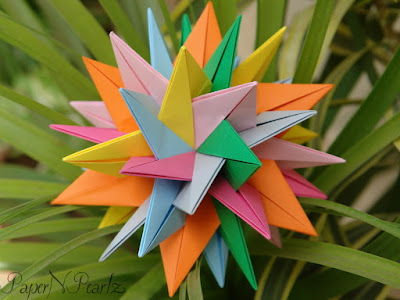The Origami 4-star box is one of the very few models that I was able to fold from the Origami Tanteidan Vol 17. I was actually quite delighted to find that I could actually fold one of the models, given the complexity of the origami!
The box is a modular pattern, 4 modules for the lid and 4 for the base. The lid and base are folded in the same way except (1) the walls of the base are higher than the lid and (2) the spiral of the base is folded into the model so that it isn't visible at the base.
I found the model interesting to fold in that, usual modular boxes are folded as 2D and in the final step they are converted into 3D. But in this one, the model no longer lies flat from the second step after the precreasing. And of course, the folding the spiral into the base wall was also something new.
Model Details:
Model: Four Star Box
Creator: Toshikazu Kawasaki
Book: Origami Tanteidan, Volume 17
Difficulty Level: High Intermediate
Paper Ratio: Square
Paper Size: 5 inches squares
Modules: 4 for base and 4 for lid















